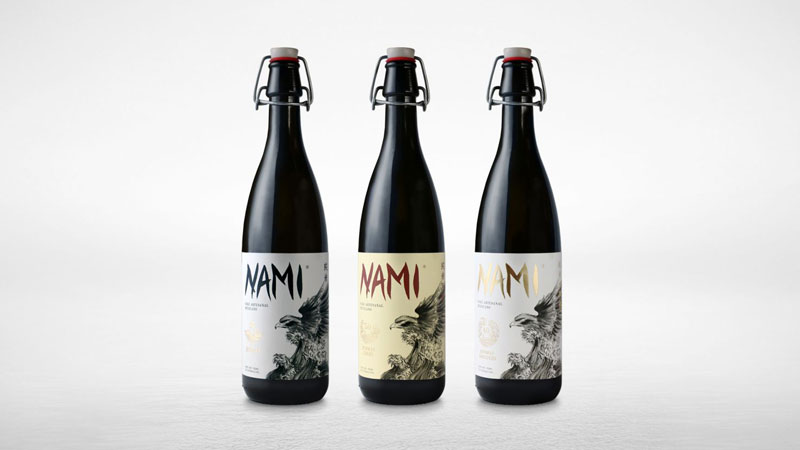In Mexico, the land of tequila and mezcal, a sake revolution is slowly brewing. NAMI, a spirits company whose name is Japanese for “wave,” is the first Mexican premium sake brand bringing a distinctly Mexican contribution to the category.
All of NAMI’s products, including three sake varieties — Junmai, Junmai Daiginjo, and Junmai Ginjo — and a rice lager are brewed at its microbrewery, Sakecul, in Culiacán, the capital of the northwestern Mexican state of Sinaloa. The company was founded in September 2016 and is still relatively new to the sake market, but that hasn’t stopped its growth throughout Mexico.
In an average month, NAMI sells more than 2,000 bottles. NAMI also has a presence in the country’s top restaurants, including Pujol and Contramar, both in Mexico City, and newly opened Misaki at Solaz Resort in Los Cabos.
NAMI’s promising start didn’t come without its share of difficulties. The vast majority of sakes available in Mexico are imported. In order to create a 100 percent Mexican sake, co-founders Alberto and Santiago had to start from scratch.
Rodrigo Ortigosa, director of NAMI, says it was quite a humbling process. “They started the journey online trying to find someone in Japan that believed in the idea of making a really high-quality Mexican sake,” Ortigosa says. “They had a lot of closed doors when they tried to contact people because they had no idea how to make sake.”
Eventually, they connected with Muteka Nakashima of Nakashima Sake Brewing, a family-owned Japanese brewer that has been around for more than 300 years.
Nakashima connected them to the person who would later become their Master Toji, the equivalent of a winemaker or brewmaster for sake. Master Toji shared his tips and knowledge on things such as the best equipment they’d need back in Culiacán.

Brewing sake is a slow, measured, intentional process. Core ingredients are water, yeast, rice, and Koji, or Japanese fungus spores.
The rice is crucial and in order for it to be used to brew and ferment the sake in its last stages, it has to be polished. Polishing, or milling, removes the outer layers of protein and fat. How much is milled determines the type of sake that makes it into the bottle.
From there, the rice is washed, steamed, and soaked. Koji and the steamed rice together constitute the yeast starter, or shubo. A series of fermentation processes proceeds, including moromi, or mashing, pressing, and, ultimately, storage for aging.
Riku López, former drinks manager for his brother’s restaurant group, Edo Kobayashi, says the rice lager, Haiku, is most diners’ first exposure to NAMI. Mexican lagers like Tecate, Sol, Corona, and Modelo reign supreme in the country, so NAMI’s Japanese rice lager challenges conceptions of what beer can be and what it can taste like. Especially since it is also brewed in Mexico.
“Most people like to start with a Haiku beer,” López says. “We tend to offer it as a way to freshen up prior to the meal of more alcohol-heavy drinks. People often appreciate the suggestion, after which we explain that in Japan people typically begin their night out with a small beer.”
Edo Kobayashi has been a part of the NAMI conception from the beginning, López adds. Kobayashi representatives even met with Master Toji at one point, giving feedback and tasting unreleased sakes.
In terms of future expansion, NAMI has its sights set on other markets, including Cancun and Tulum. By early 2020, the company hopes to distribute internationally as well.
In the meantime, Ortigosa says, Mexican diners are starting to experiment with sake pairings beyond Japanese food. “Without noticing, consumers are already pairing their sake with vegetables, different types of meat,” Ortigosa says. “We want them to be more imaginative and take more risks. Try it with Italian and Mexican food.”
The feedback NAMI received from consumers has always been positive, López says, “but more people would feel proud to know that a sake of that quality and flavor could be made in Mexico. It becomes their sake.”
